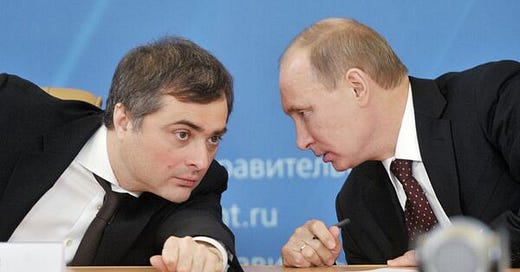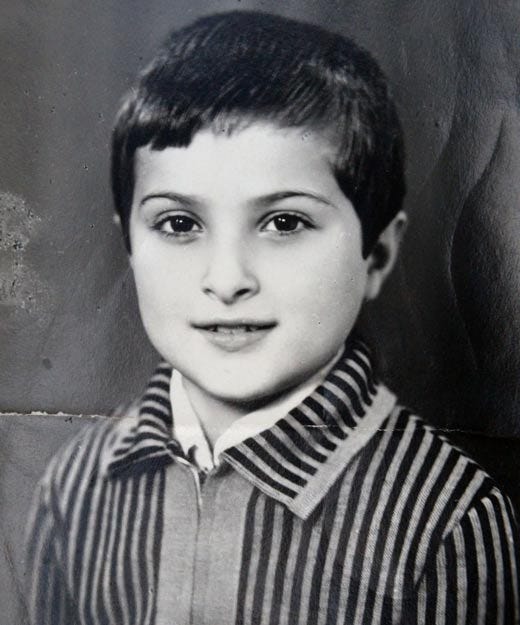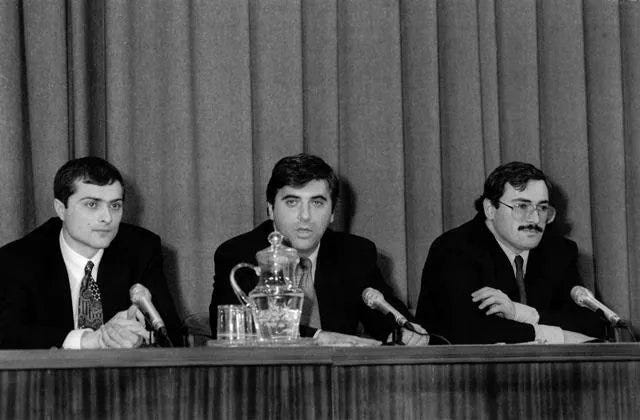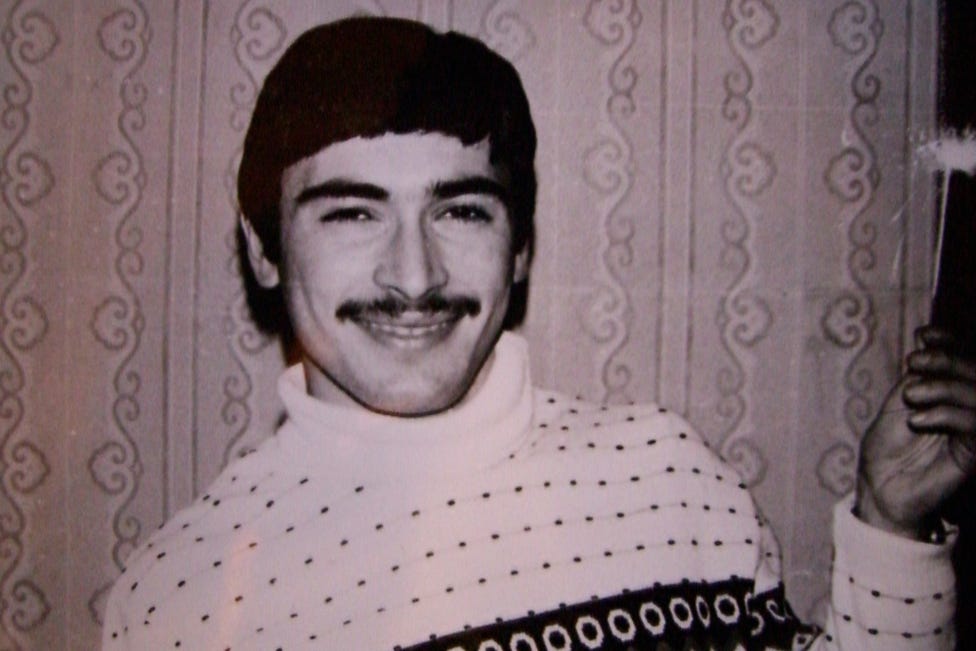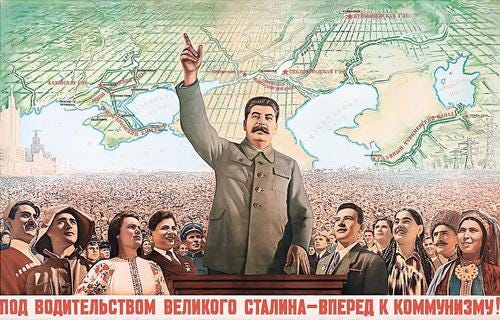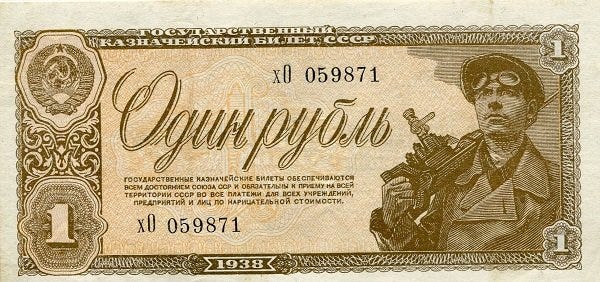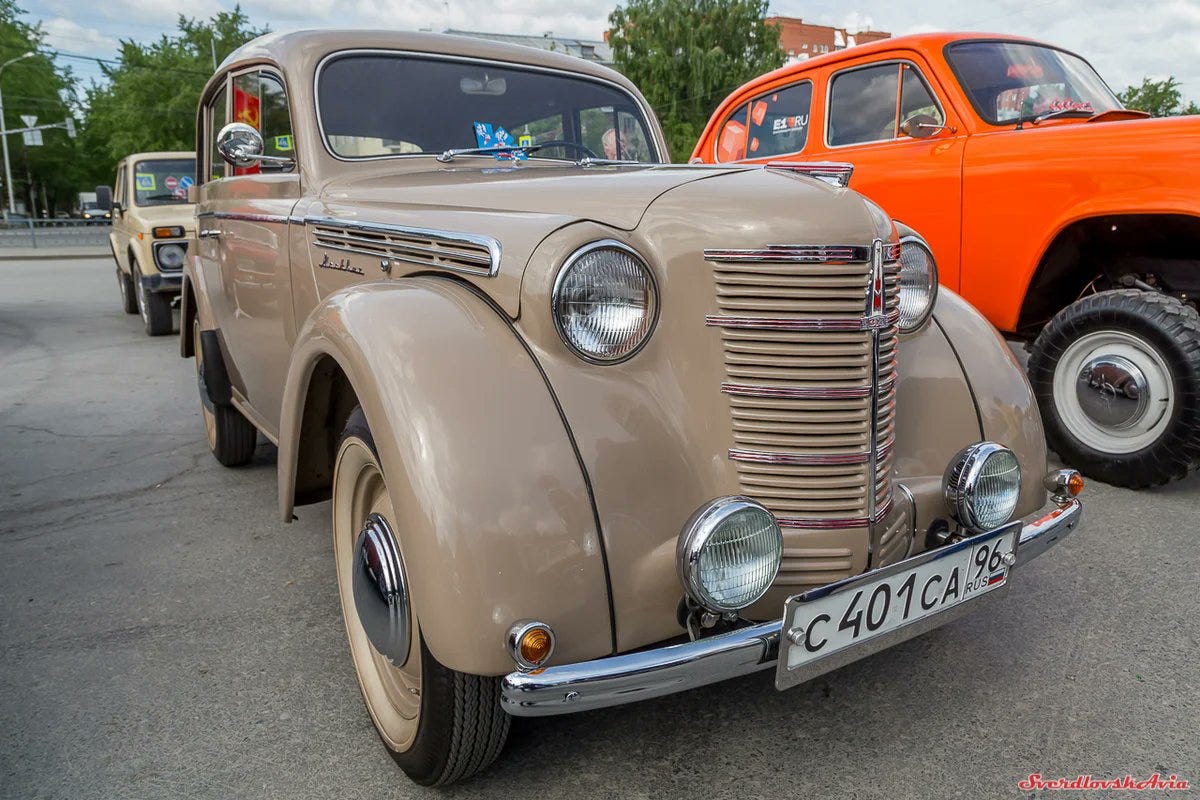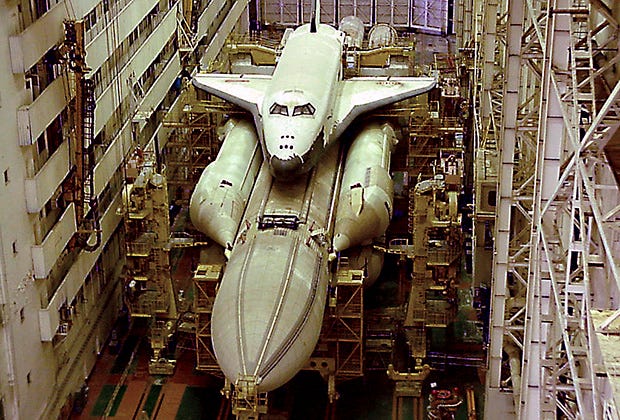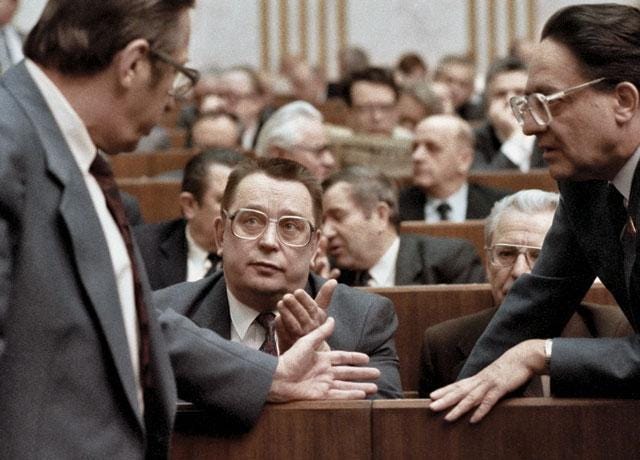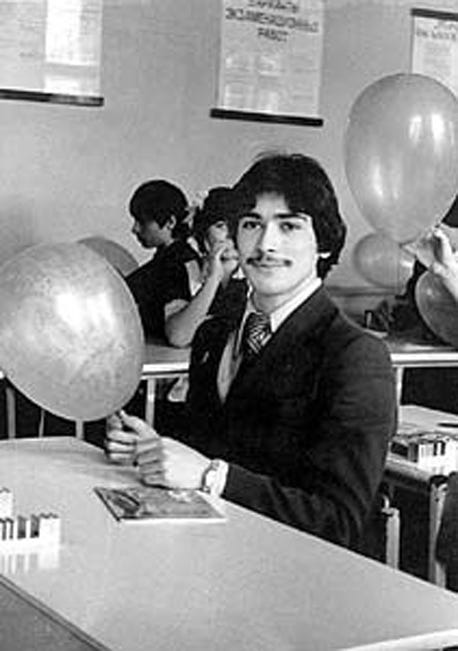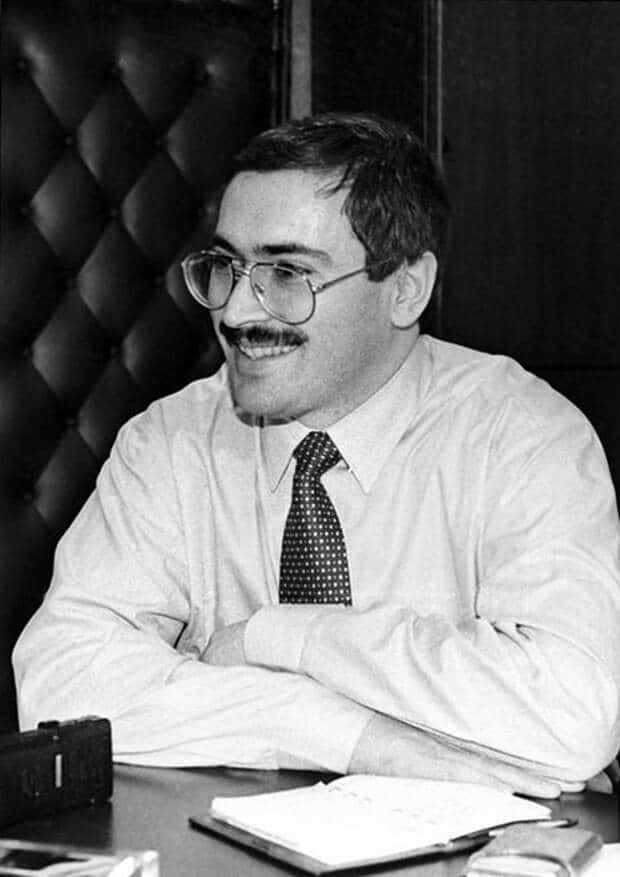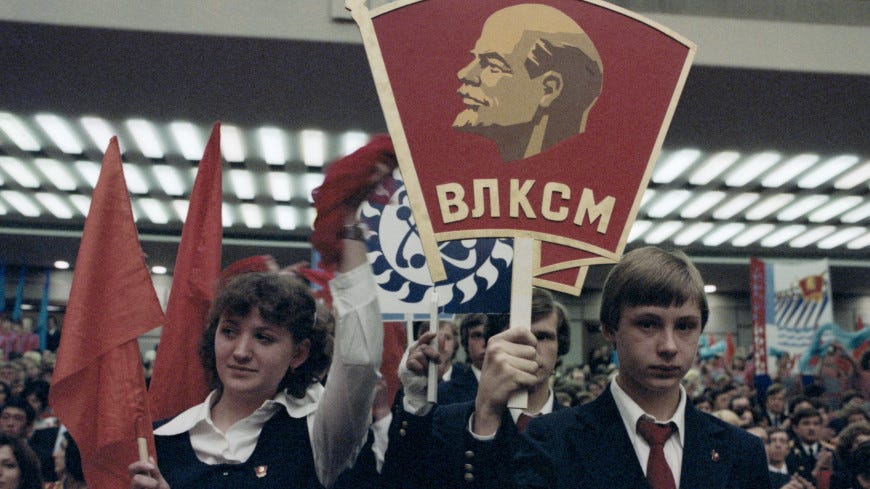Vladislav Surkov has been widely referred to as the grey cardinal of Kremlin. For years he ran the Russian domestic politics and later Kremlin's policy in Ukraine. On Feb 15 he published an article calling for the war to reannex Ukraine, Belarus and Baltics. Today I'll discuss his role in Putin's rise to Presidency
Surkov has mixed heritage. His dad is Chechen - Andarbek Dudaev, his mom is Russian - Zoya Surkova. He spent his childhood in a Chechen village where he was known as Aslanbek Dudaev. But then his parents divorced and his mom took him to Russia proper, where he turned to Vladislav
After school Surkov served in army, in military intelligence. With the start of Perestroika, commerce was allowed in the USSR. In 1987 Surkov started working for Khodorkovsky, who would soon become the richest oligarch in Russia. Here you see Surkov, Nevzlin and Khodorkovsky
How did Khodorkovsky get so rich? This story reflects the origins of many oligarchic fortunes. Khodorkovsky was the chief of local NТТМ - Office for Scientific and Technological Initiatives of the Youth. NTTM was a department of Komsomol - the youth branch of the Communist Party
Until Perestroika positions in these NТТМ centres were not that lucrative. Komsomol functionaries serving there didn't have much leverage. But then everything changed. To understand why, we'll do a little trip into the Soviet monetary system and how did the Soviet money function
In 1929-1932 Stalin imposed total control over the Soviet economy. All enterprises were turned into state enterprises. To facilitate his statist model Stalin built new monetary system. In traditional system there was one circular flow of money. Stalin created two separate flows
The first one was the cash flow. The state used cash to pay wages to people and people used it to buy stuff from the state. Second flow was noncash. Government enterprises and agencies used it for transactions with each other. Cashing out noncash money was absolutely prohibited
Why would Stalin do that? Largely to pump money into the industry without triggering hyperinflation. Government created as much money as necessary for construction + subsidies, but made sure it won't be used by regular people for buying stuff. Hence prohibition for cashing out
Prices on retail market were quite arbitrary. For example public transport was far cheaper than it really costed to the state. Meanwhile cars were super expensive, the state selling them with like 200-300% profit. State earned money selling cars and thus funded the public transit
And yet noncash prices were *way* more arbitrary. For example, textile and aerospace industry production was valued in noncash roubles. But regarding the cost of production, the weight of a noncash ruble in the latter could be hundreds or thousands times higher than in the former
The system worked as long as the Soviet economy remained strictly statist. As long as the prohibition to cash out noncash money was enforced. But in Perestroika they experimented with introducing market elements to the statist economy and this new hybrid system didn't work at all
In 1988 the new Law on Cooperation officially allowed the commerce. In theory it would allow normal people to do business ("кооператив"). In practice however, Soviet/Russian "business" was mostly about government functionaries cashing out their administrative leverage
A government agency (factory, ship company, local government) would establish a private firm (cooperative) with the agency's CEO as the main beneficiary. CEO of a state agency would plunder it in order to transfer resources to his private firm. That's why they were so lucrative
In 1988 NTTMs were allowed to break a great Soviet taboo on cashing out the noncash money, making them a leverage for plunder. An NTTM chief would establish a private cooperative, cash out government noncash funds and transfer them to his cooperative, effectively privatising them
Of course, NTTM chiefs started cashing out as much noncash funds as they could. That triggered hyperinflation, destroying the frailing Soviet economy, but created some enormous fortunes. Such as the one of Khodorkovsky - the future richest oligarch in Russia
This shows why the NТТМ leadership is so overrepresented among the richest Russians. They used the crony opportunities Komsomol gave them and cashed out lavishly. Moreover, it shows why former Komsomol leaders in general are so overrepresented among the current Russian elites in general
Soviet propaganda portrayed Komsomol as idealistic youth faithful to the Leninism. This was often true in 1920-1960s. However, by the 1980s true believers were selected out. New leadership consisted of incredibly cynical and opportunistic folk - such as Khodorkovsky or Matvienko
Upward mobility within the adult Party was difficult by the 1980s. Frailing gerontocracy occupied all the positions of power and refused to leave. So young smart and cynical Komsomol guys waited for their chance, and exploited the collapse of Soviet system better than anyone else
Let me quote Dorenko:
"We'll live for 130 years. My kids and grandkids will live in my shadow. Only my great-great-grandchildren will see the sky. We'll fuck everyone. Why us? Cuz we've plundered the country. We killed, slandered our fathers. That's why our generation is unique"
Keep reading with a 7-day free trial
Subscribe to kamilkazani to keep reading this post and get 7 days of free access to the full post archives.
